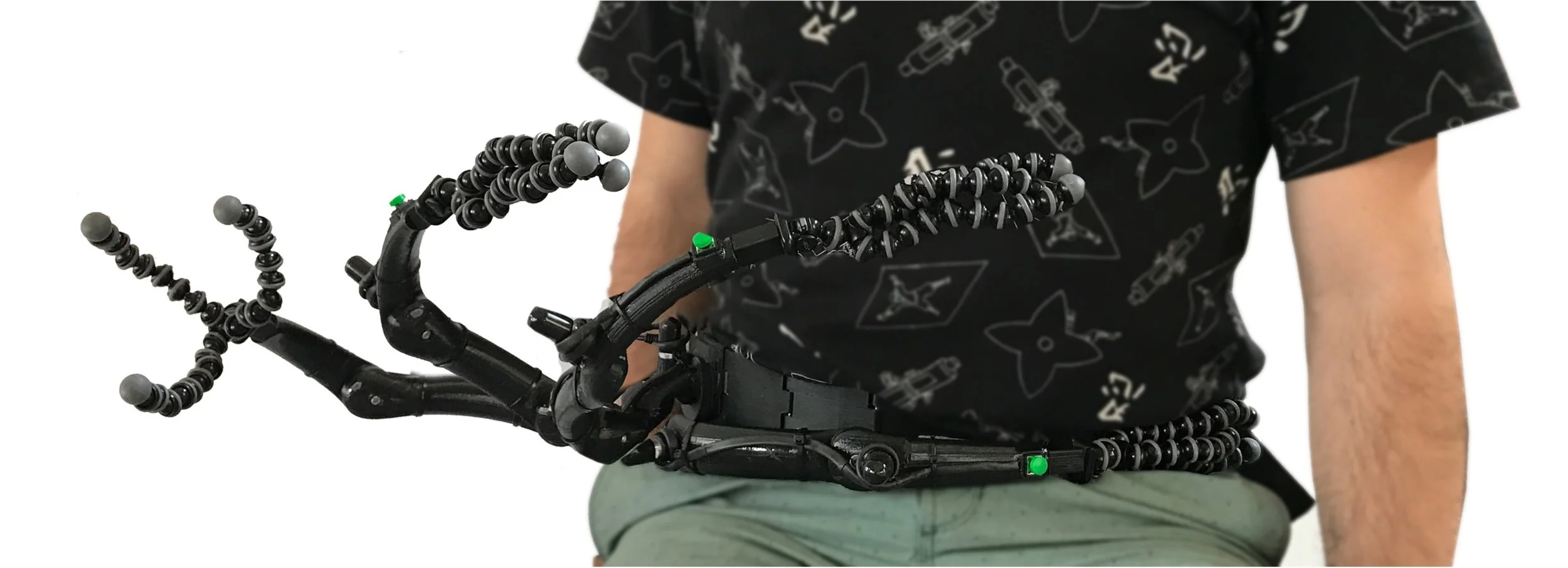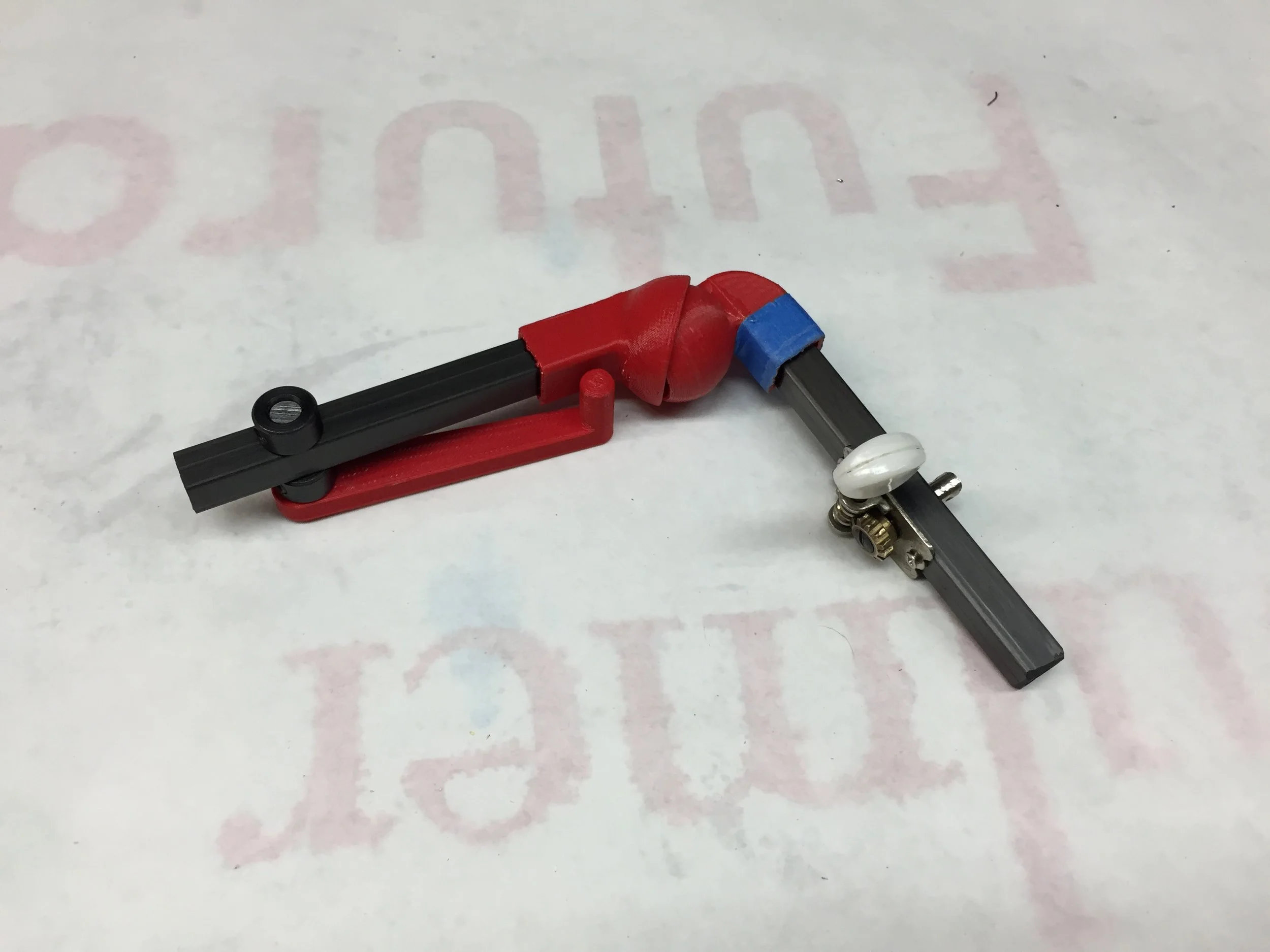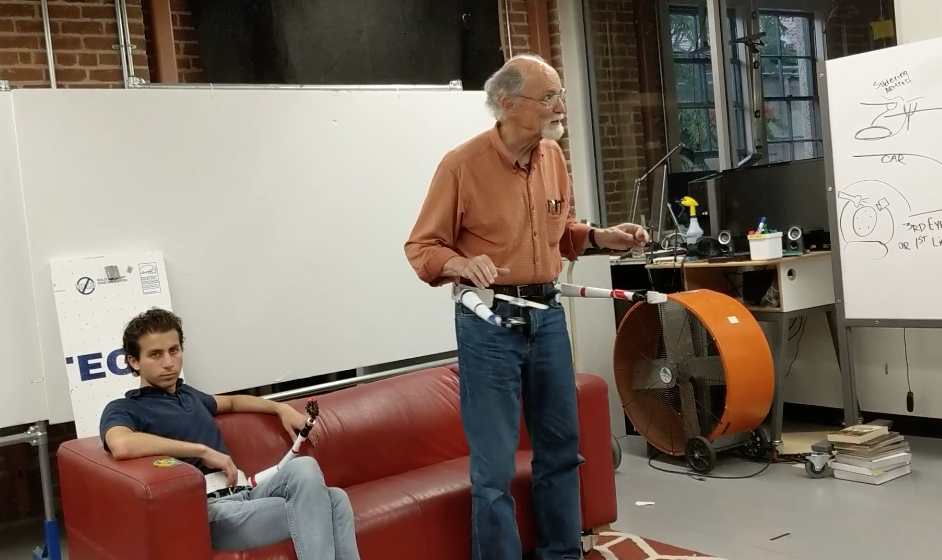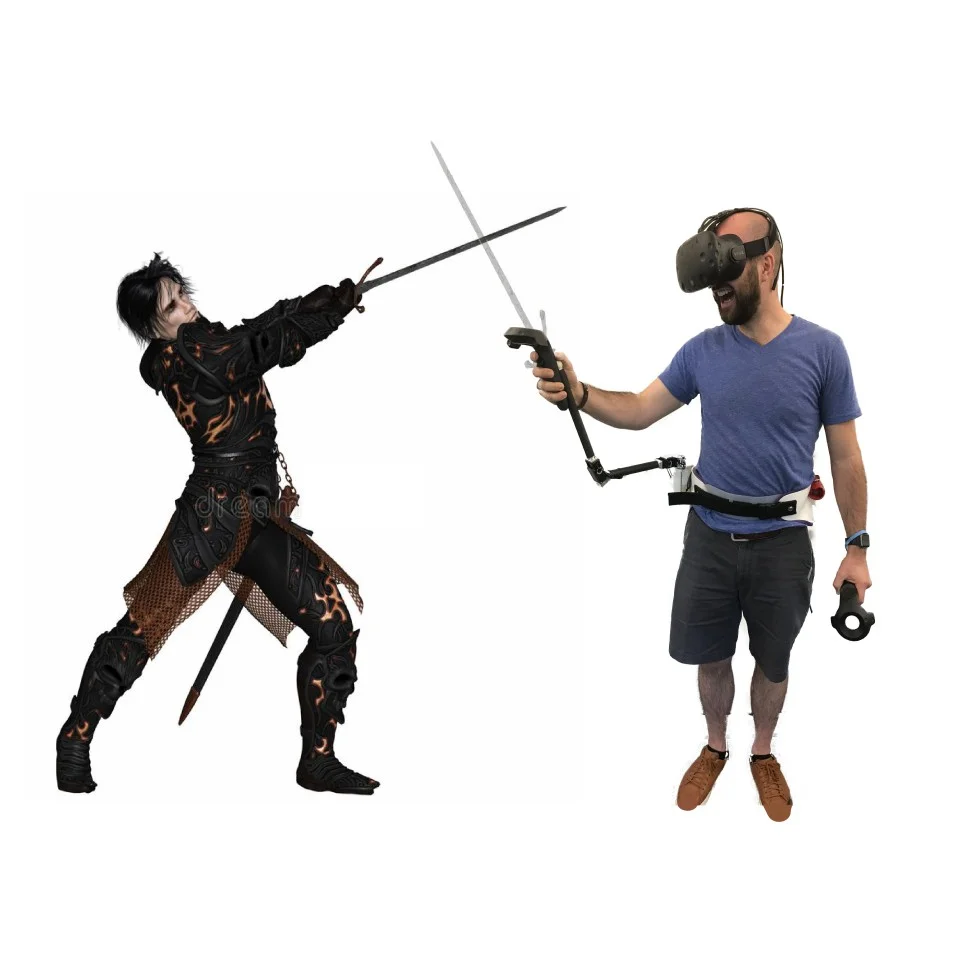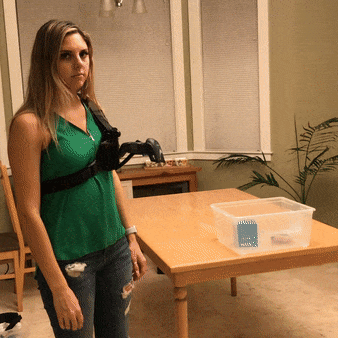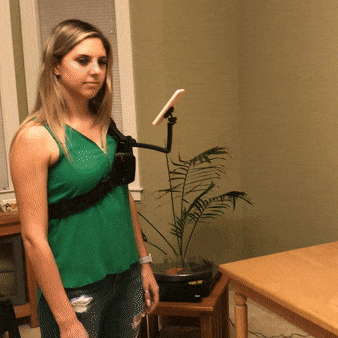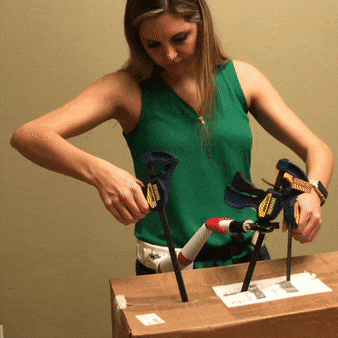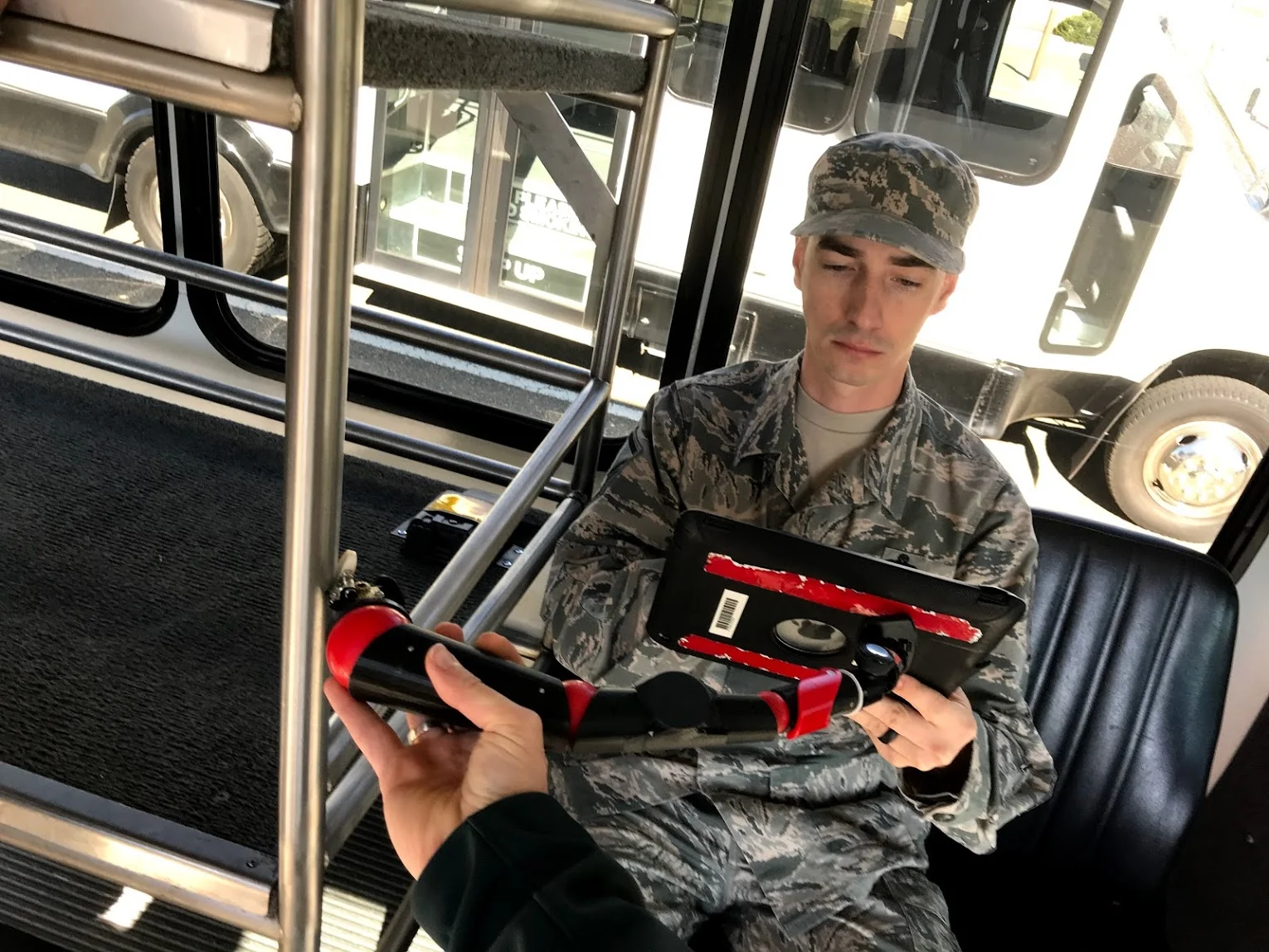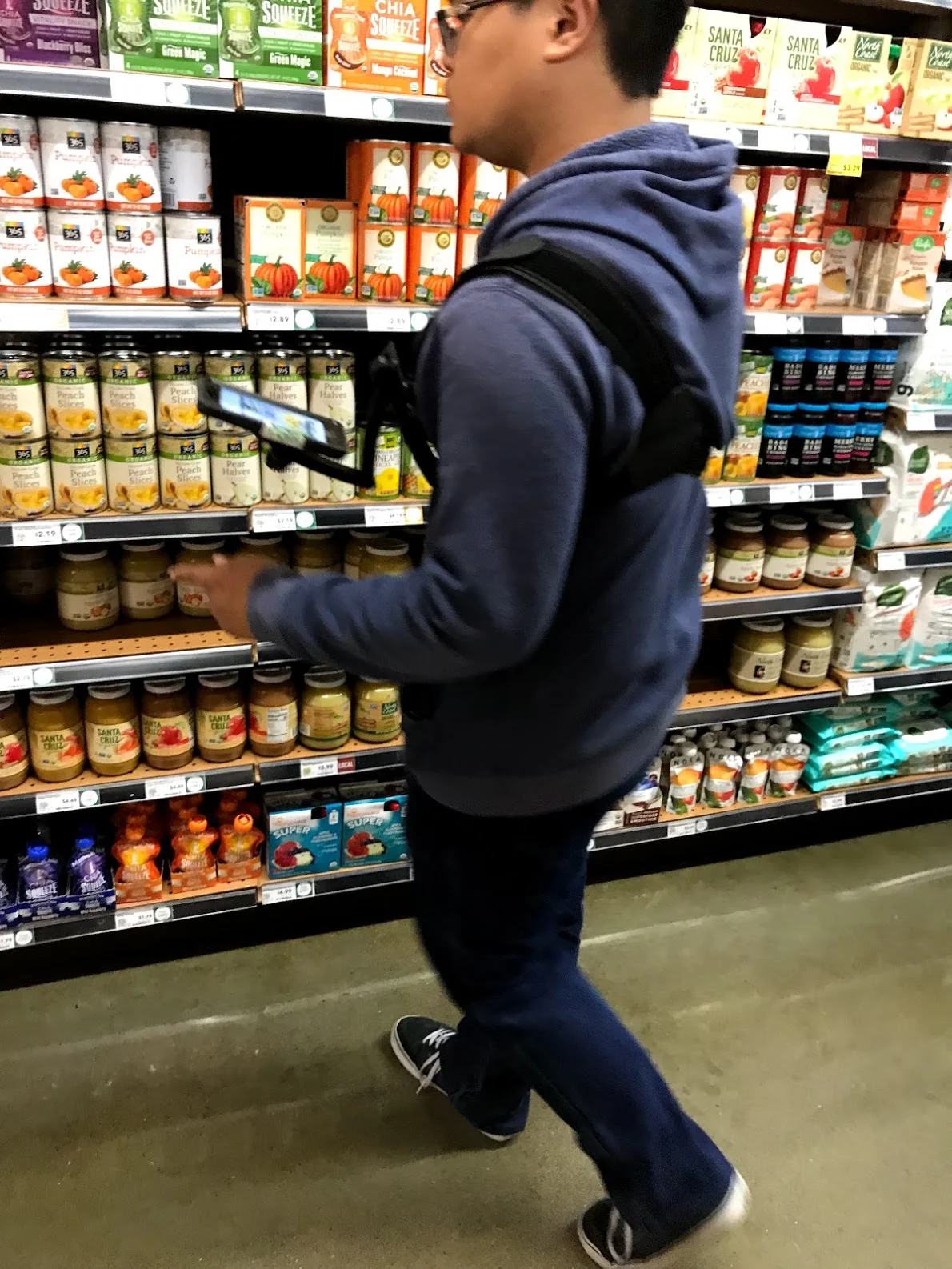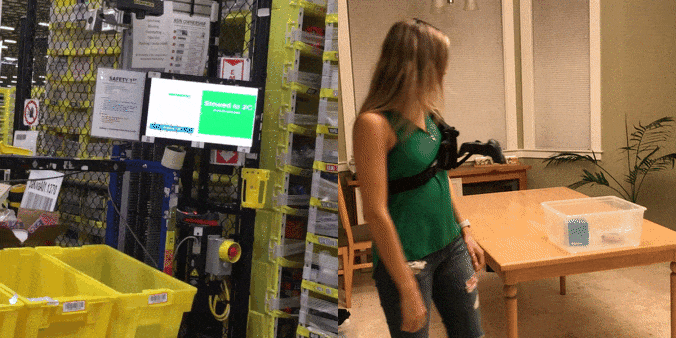3rd Arm Inc
Pioneering a new category of articulated wearable devices
Duration
3 years
Team
Dr. Kenneth Salisbury, Austin Epps,
Role
Research Assistant (RA), Design leader, Cofounder
In the first year of my master’s at Stanford I won a research assistant position on a new project in the AI lab to explore the concept of smart wearable “3rd arm” robotic devices. Over the course of the project (2 years) I was able to serve an instrumental role by fusing design thinking with the technical research approach.
Although I was a regular contributor to the motorized efforts, my prototyping efforts around simpler devices yielded such promising results that the PI decided to form a separate division of the project to explore non-motorized devices, which I led. This eventually became the central focus of the project. I was retained as a consultant after I graduated and am now leading the effort to continue developing the technology and commercial applications with my professor in our spin-out company: “3rd Arm Inc”.
Over this process, we have filed four patents, raised offers for pre-seed funding, presented research findings for SAIL-Toyota, and exhibited in Dubai.
Early work: prototyping and leading design process
(/In my first few weeks on the project I created a series of prototypes that led the way forward, starting with a prototype that only took 10 seconds to make.)
(/In my first few weeks on the project I created a series of influential prototypes, starting with one that only took 10 seconds to make.)
Due to the complexity of starting such an ambitious and unprecedented effort, laying the groundwork was no mean feat. Soon after starting, the project was becoming mired in myriad technical considerations. Progress was stalling amid debates around kinematic layout, number of degrees of freedom, control scheme, motor power, how to incorporate machine learning, and so on.
Although the engineering team was very talented, my knowledge of design process helped me intuit that the high degree of uncertainty around designing a robot arm to be worn on the body meant that conventional analytical approaches weren’t the best tool to reach for, and were instead generating more questions than answers.
During one group meeting I employed the “make to think” approach and grabbed a few crude prototyping supplies, taped a rod to my waist, and then started pantomiming different kinematic arrangements. The attention of the room shifted to my prototype and the group suddenly came unstuck as the team started zeroing in on insights about the most viable layouts and their implications for the other questions we were grappling with. This moment made an impact on the team, and I stepped into the role of championing good design process.
My contributions to the team design process were often related to being more “mindful of process” - considering which approach or toolkit a problem calls for, instead of instinctively reaching for the hammer of engineering.
One form this took was helping my teammates get better at using “pretotyping” and “physical sketches” to explore a design before committing to slower, more expensive high fidelity prototypes. One week, a team member brought in a beautifully CNC milled bracket as their first physical prototype which unfortunately didn’t quite fit. We explored the design on paper together and then with a Fomecore physical sketch, which resulted in a significantly improved design for the part.
Another theme I frequently coached was to separate consideration of potential solutions from technology and implementation. For our talented team of engineers, technology approaches were synonymous with innovative solutions, so they found it foreign to consider alternative solutions without immediately jumping to discussion of technology. In one meeting, we were discussing adding actuated joints to an arm to allow it to automatically “gimbal” and track a target with a flashlight. Some of the team immediately started making preparations to produce this functionality, which would have taken several weeks to complete. Instead, I guided the group in testing this idea more quickly. We used an existing unpowered gimbal to hold a flashlight, attached a thread to its front and to a chair, and were able to actually evaluate the usefulness of the tracking functionality before the meeting ended.
Over the rest of the project I was also able to redirect the group culture from primarily discussing roadblocks at meetings to being more proactive and bringing prototypes to share. This clarified which issues actually needed group input, energized the team, and helped make their ideas more tangible.
Research and engineering
I also did the role of an engineer on this project and made a number of refined prototypes.
I worked with Bill Verplank (one of the pioneers of interaction design) on refining our strategies for interaction and to design hardware with good affordances, signifiers, mapping, etc. to make our prototypes intuitive for novice users.
Comfortably mounting mechanical hardware on the body for extended periods of time is a tricky design problem. I worked through many approaches to body mounting and one of my favorites is a design similar to a linked watchband worn as a belt. The hips are able to support lots of weight without straining or compressing the vertebrae (consider a backpack waist belt), and the rigidity and proximity of the pelvic bones to the skin offers a remarkably stable and firm mounting surface. The belt is designed to be rigid in axes all but the vertical axis, so it easily conforms to a user’s hips while its rigidity in other directions means that weight and torsion resulting from an attached arm is spread evenly over the wearer’s waist. It also utilizes a Fidlock magnetic buckle which allows it to be donned and doffed (taken on and off) in one step. Because prosthetic devices are the closest body mounting analogy, I worked with a prosthetist to refine the designs.
Another significant effort we undertook was to design a new kind of electromechanical brake that would allow the arm to seek and lock in a desired position without actuated joints. This was accomplished by joints with electrically selectable ratchet direction that could travel in either direction with less than a degree of backlash. (patents pending)
We also designed actuated, fully-robotic prototypes that could do various tasks under voice control as well as function as a kind of wearable joystick to enable controlling other robots. We also used these devices for haptic feedback in virtual reality, which gave promising results. This means that a small wearable can provide true room-scale force feedback for a user’s arms, which could enable a much greater degree of realism than current haptic feedback based on vibration. (patents pending)
I have included a selection of unpowered prototype designs below and some of what we learned from them (scrolling gallery):
I exhibited the designs at a number of venues and one prototype was even tried on by the Sheik of Dubai!
Testing
I pushed the team to test of our prototypes early and often which produced valuable insights for designing subsequent iterations.
Aesthetics: Our first tests outside the group revealed that the initial prototypes were too ugly for even Pokemon Go users to be willing to wear! This confirmed that there was some aesthetic and cultural risk (since we were perhaps even stranger than Google glass!) and suggested industrial applications might be more accepting in this respect. We made sure subsequent designs were more and approachable.
Durability: Another early prototype broke within five minutes of handing it to a tester, which clarified what loads novice users expected the device to support.
Sizing: An early industrial test in a Toyota manufacturing plant revealed that design was too bulky and the automotive assembly environment too risk-averse to be a good first market for this kind of technology.
Interaction: Many tests underscored the importance of being intuitive to use, easy to put on and remove, and stow on the body when not needed.
These insights led to us producing a passive device with a simple and nonthreatening form, reasonable strength, extreme robustness, “fail safe and soft” rubber joint design, and extremely fast and easy interaction paradigm: flipping the red lever up to unlock and down to lock. We used a simple tripod screw mount for end effector mounting to make this design even more approachable.
Taking the refined passive arm for a stroll
commercialization investigation/push / tech transfer efforts:
This design received a strong response that suggested it has commercial potential, so for the last phase of the research funding we began investigating potential applications for the passive 3rd arm designs.
Our vision is based around the premise that people have limited physical capability. Humans have only two hands, limited dexterity and speed, are easy to fatigue, etc. As a result, there are lots of startups working to automate various kinds of tasks, although it’s becoming clear that completely automating physical tasks which take place in unstructured environments is difficult because sensing and AI can’t yet handle much unpredictability. We believe that for many kinds of tasks, human augmentation will be the best approach. By leveraging what both humans and machines do well, this will allow fewer workers to accomplish more in totally new and better ways.
Our observations and testing have revealed that there are many naturally “3 handed” physical tasks for which one hand doesn’t need to take an active role, such as holding a flashlight, information display, or sensing device. Our preliminary tests show that in these cases, a passive body-referenced third hand can significantly enhance productivity. This suggests promise for lower-tech devices, which could be launched quickly and then imbued with greater performance and sophistication as individual use cases dictate. Eventually we plan to leverage upcoming technology improvements to provide workers with greater precision and speed for certain tasks, such as enabling an untrained worker to weld with superhuman skill.
A selection of tasks we are evaluating for commercial potential:
Field tests doing various tasks:
Preliminary testing at Amazon fulfillment centers suggests that our devices could be valuable for stowing (putting items into inventory) and picking (pulling from inventory to fulfill an order) by holding the worker’s scanner and freeing up both their hands to manipulate packages. The un-augmented Amazon worker on the left takes significantly longer to stow (due to being encumbered by holding the scanner) and experiences greater frustration.
